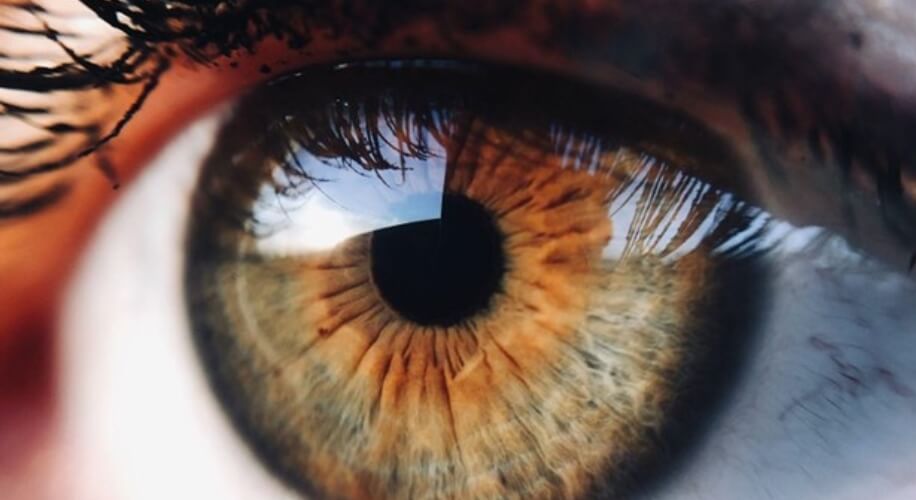Hazel Eyes: Separating Fact from Fiction

Reference: Lukáš Dlutko
Hazel eyes, with their enchanting blend of colors, have long fascinated people and inspired various myths. In this installment of our fact-from-fiction series, we’ll explore the truths and misconceptions about this unique eye color.
What Color Are Hazel Eyes?
Hazel eyes feature a distinctive mix of brown, green, and gold tones, creating a mesmerizing appearance. Unlike solid eye colors, hazel eyes are notable for their variability, with hues that appear to shift based on lighting conditions and other factors. The term encompasses a spectrum of shades, from light golden to deep green, making each pair uniquely beautiful.
Hazel Eyes vs. Green Eyes
While both colors are striking, hazel eyes stand out due to their complex interplay of colors, distinguishing them from purely green eyes.
Hazel Eyes vs. Brown Eyes
Unlike brown eyes, which typically display a uniform color (though varying in depth), hazel eyes exhibit a more complex, multi-tonal appearance.
Common Myths About Hazel Eyes
Myth 1: Hazel Eyes Change Color with Mood
Reality: While hazel eyes may appear different under varying conditions, there’s no scientific evidence supporting mood-based color changes. These perceived shifts result from external factors such as:
- Lighting conditions
- Clothing colors
- Makeup
- Environmental reflections
The iris’s pigmentation remains constant, though its appearance may vary based on these external factors.
Myth 2: Hazel Eyes are Rare
Reality: While not the most common eye color, hazel eyes aren’t particularly rare. According to a 2014 American Academy of Ophthalmology survey, approximately 18% of the U.S. population has hazel eyes.
What Ethnicity Has Hazel Eyes?
Hazel eyes can be found in individuals from various ethnic backgrounds. Celebrities such as Angelina Jolie and Johnny Depp showcase the allure of this eye color, demonstrating the captivating nature hazel eyes bring to one’s appearance. While more common in people of European descent, hazel eyes can also appear in individuals from Middle Eastern, Latin American, and even some Asian heritages. The presence of hazel eyes is primarily a result of genetic variation rather than ethnicity alone.
Do Hazel Eyes Have Any Advantages?
Throughout history, hazel eyes have been celebrated in art and literature, often symbolizing mystery and depth. Some believe that hazel eyes carry mystical or supernatural qualities, but in reality, eye color is simply a product of genetic variation.
What Do Hazel Eyes Say About Your Health?
Hazel eyes do not provide specific insights into overall eye health; instead, they reflect the distribution of melanin and other pigments in the iris. However, changes in eye color or the appearance of hazel eyes could signal health issues when accompanied by other symptoms. Regular eye exams are crucial for assessing eye health, as they can detect conditions such as glaucoma or cataracts, which are unrelated to eye color but essential for maintaining vision and overall eye health.
The Enigma of Hazel Eyes
Hazel eyes continue to captivate, with their unique blend of colors and adaptability. By dispelling common myths and appreciating the beauty of hazel eyes, we celebrate the diversity of eye colors and the individuality they contribute to each person.
Whether you have hazel eyes or admire them in others, understanding the facts behind this eye color deepens our appreciation of the natural beauty that hazel eyes embody.
Understanding the Genetic Magic Behind Hazel Eyes
Hazel eyes are a breathtaking mix of colors that many find enchanting. Have you ever wondered what causes this mesmerizing eye color? Let’s explore the science behind hazel irises.
The Role of Melanin
At the core of eye color, including hazel, is the pigment known as melanin. This same pigment influences the color of skin and hair. The concentration and distribution of melanin within the iris, shaped by genetic factors, ultimately determine an individual’s eye shade.
Genetics and Variation
Individuals with hazel eyes inherit specific genetic instructions that regulate melanin production. Unlike more uniform eye colors, hazel eyes can showcase a combination of green, brown, gold, and sometimes even blue. This unique quality arises from the uneven distribution of melanin across the iris.
Why the Color Mix in Hazel Eyes?
The intriguing aspect of hazel eyes is their multi-tonal appearance. This variability results because different parts of the iris contain varying amounts of melanin. For instance, you might observe a darker ring surrounding lighter shades. This blend not only makes each individual’s hazel eyes distinct but also explains why they can appear to change color under different lighting conditions.
In summary, hazel eyes represent a complex interplay of genetics and diverse melanin distribution. This complexity makes them particularly captivating, though they are relatively rare compared to other eye colors. Each pair of hazel eyes is uniquely individual, reflecting a distinct genetic heritage in their melanin arrangement.
About the Author: Dr. Sophia Moh, OD, ABOC
Dr. Sophia Moh, OD, is an optometrist based in the Bay Area, California. She holds a doctorate from UC Berkeley School of Optometry and has worked in various eye care settings, including primary care optometry, general ophthalmology, community health clinics, and Veterans Affairs. Dr. Moh is dedicated to improving global vision health by making high-quality, affordable eyewear accessible to all. She is also a certified American Board Optician (ABO) and actively contributes to optical education through training and lectures.



 Canada
Canada